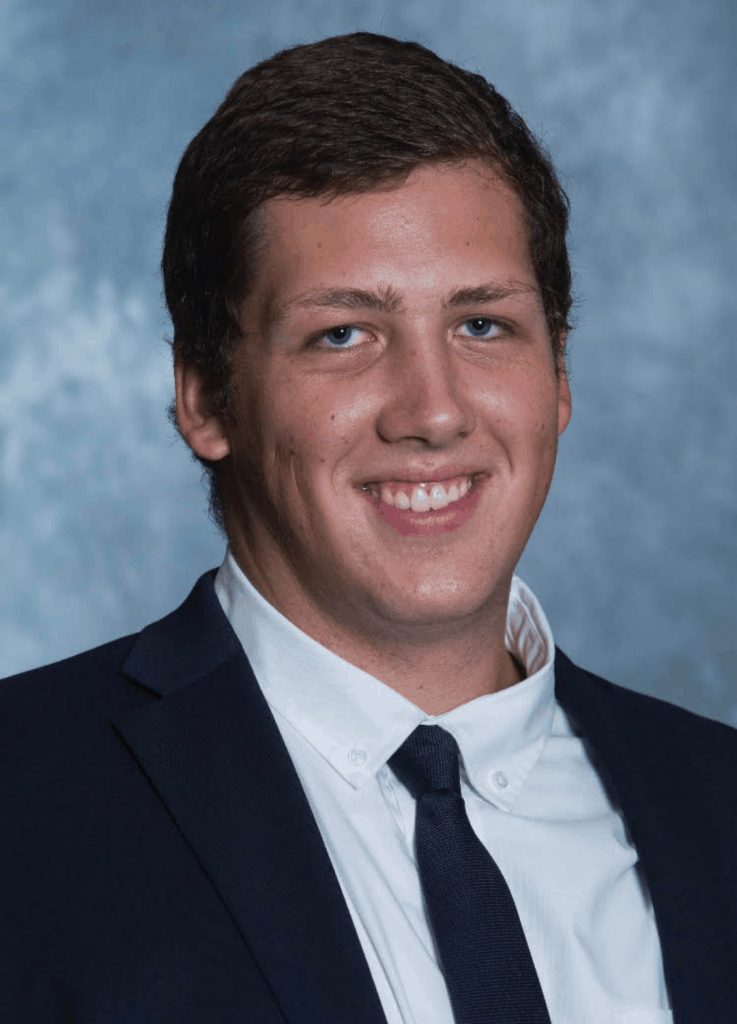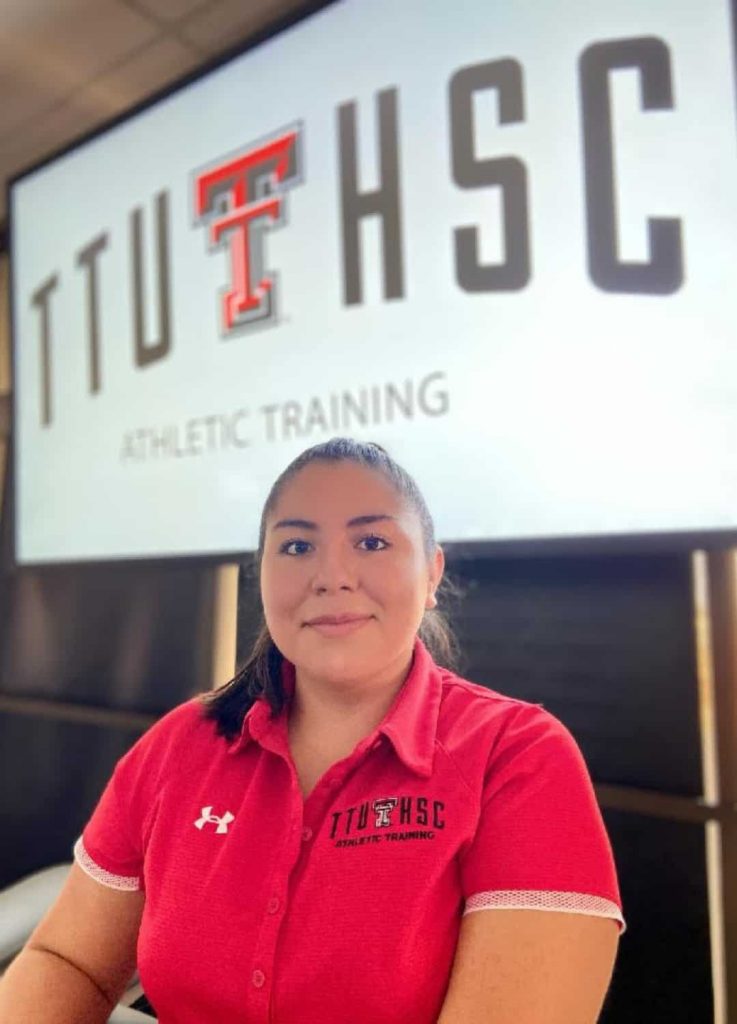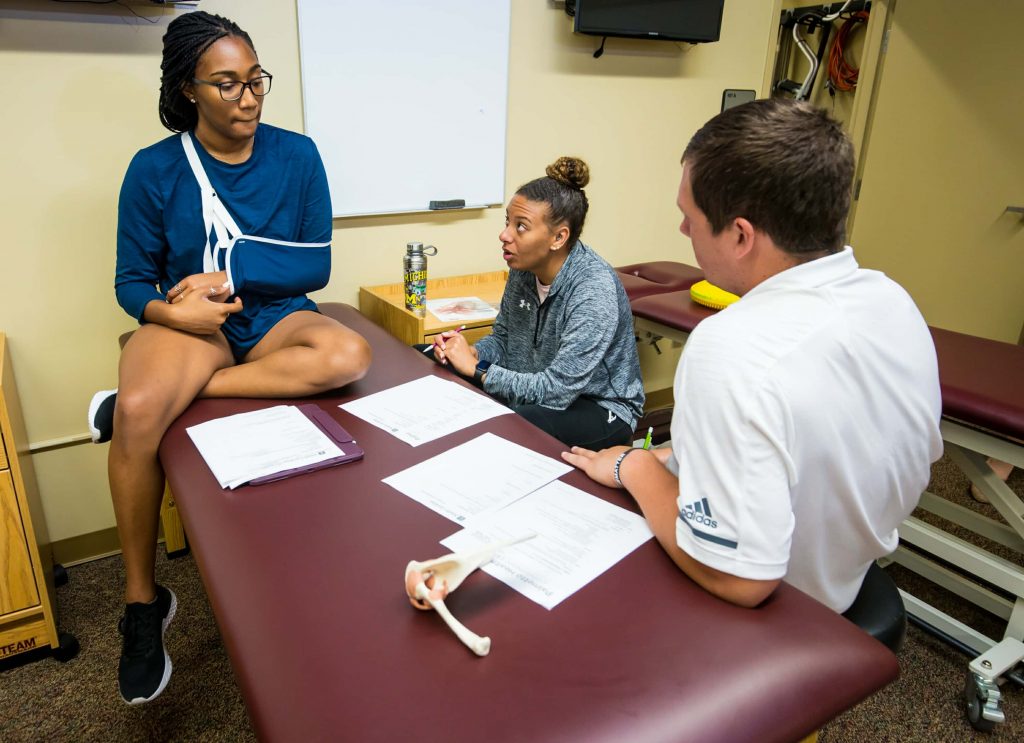A key feature of an Athletic Training program is the clinical experience, where students work with a preceptor to gain supervised experience in real patient care.
In this double interview, we hear from Brett Elder, a second-year master’s degree student in the Athletic Training program at the University of South Carolina, and Rebeka Rosas, who is currently in year 2 of her professional master’s degree in Athletic Training at Texas Health Science Center. They share their experiences as Athletic Training students.


What inspired you to pursue Athletic Training?
Although Elder and Rosas ended up on the same career path their journey to the paths was different. Elder says that he came upon the idea of Athletic Training as a career after an injury during his undergraduate studies. “It was actually my undergraduate experience that inspired me to get into Athletic Training. It originally started when I broke my wrist during my freshman year when I was on the track team. I had to go through the recovery process and knew I wanted to do something along these lines because I enjoyed helping people in sports. After the incident, I had an opportunity to interact with Athletic Trainers and gain perspectives on different healthcare careers I could have taken, such as physical therapy or Athletic Training. I then spent 500 hours shadowing an Athletic Trainer, who involved me and made me realize how much I enjoyed the field.”
Rosas came upon the Athletic Training field at a younger age and said, “I have always been involved in sports and grew up interested in becoming a part of the healthcare profession. My inspiration has evolved over time as I aspire to provide quality healthcare for underprivileged and forgotten people.”
What inspired you to pursue Athletic Training?
Although all Athletic Training students will need to pass the same exam after graduation, they will have different experiences based on what teams and patients they are working with or what they might be thinking about focusing on in their future.
“During my time in the program so far, I’ve had an opportunity to gain clinical experience in which I applied what I was learning to actual patients. In addition, I’ve made connections with people already practicing as ATs everywhere I go. I sign up for almost every volunteer opportunity available to expand these connections and gain more experience,” says Elder. Clinical experience, or working with patients hands-on, is a great way to take what you are learning in the classroom and apply it to real-life situations. You can also go the other way and take questions you have from your clinical experiences and ask professors questions.

Photo by AATE of Brett Elder
Rosas has also been using her clinical experience to her advantage while she studies for the BOC exam. “As I make efforts to get a better understanding of the profession, I combined learning from practicing Athletic Trainers while studying for the BOC. [The BOC is the Board of Certification exam. Passing this national exam is needed to become eligible for a state credential to practice Athletic Training.] This combination allows me to learn and prepare myself to become a quality clinician.”
What are the daily challenges you face as an Athletic Training student?
When talking about their daily challenges both Elder and Rosas said that time management was one they are working on.
Elder said, “the biggest challenges for me as an AT student are time management and prioritizing as there will always be multiple things happening at once.”
Rosas added, “Athletic Trainers will have people coming for new injuries, old injuries, and rehab on top of having administration duties with a lot of emails to go through at the same time. As an Athletic Training student, I need to manage time and set priorities to decide which tasks should get done first. I need to stay calm even when I see there is a storm approaching and work it out little by little.”
Even with the challenges these students are learning about, Elder was quick to respond with the most important tool, communication. “Communication is the most crucial skill Athletic Trainers need to have. We need to talk to the physicians using medical terminology, yet also explain the situation to a middle school student who may have limited familiarity with medical terms or parents who may be anxious about their child’s condition. In emergency situations, it is important that I have the leadership skills that go hand in hand with my ability to effectively communicate with people. This will help me to direct traffic, make decisions, and make sure that everyone knows what to do.”

Photo by AATE of Brett Elder
What advice do you have for future Athletic Training students?
For someone considering Athletic Training, it might appear daunting at first, just like any career would. Rebeka’s advice to those starting on their AT journey is to never forget why they chose this path. “This isn’t a profession pursued for fame or recognition, but for satisfaction in knowing you will save and change lives every day.” Brett says, “make sure to take some time for yourself and your mental health. You have to do something outside of Athletic Training and studying. Go out, take study breaks, or go exercise. Take some time to relax and clear your mind for a while.”
Brett and Rebeka are continuing to enthusiastically study Athletic Training – and it comes through in this interview. The passion for this field that combines sport and healthcare with a focus on patient-centered care is unique and meaningful to those who have such interests. If that sounds like you, consider reviewing our I want to be an AT page to learn more about the pathway to becoming an Athletic Trainer.
